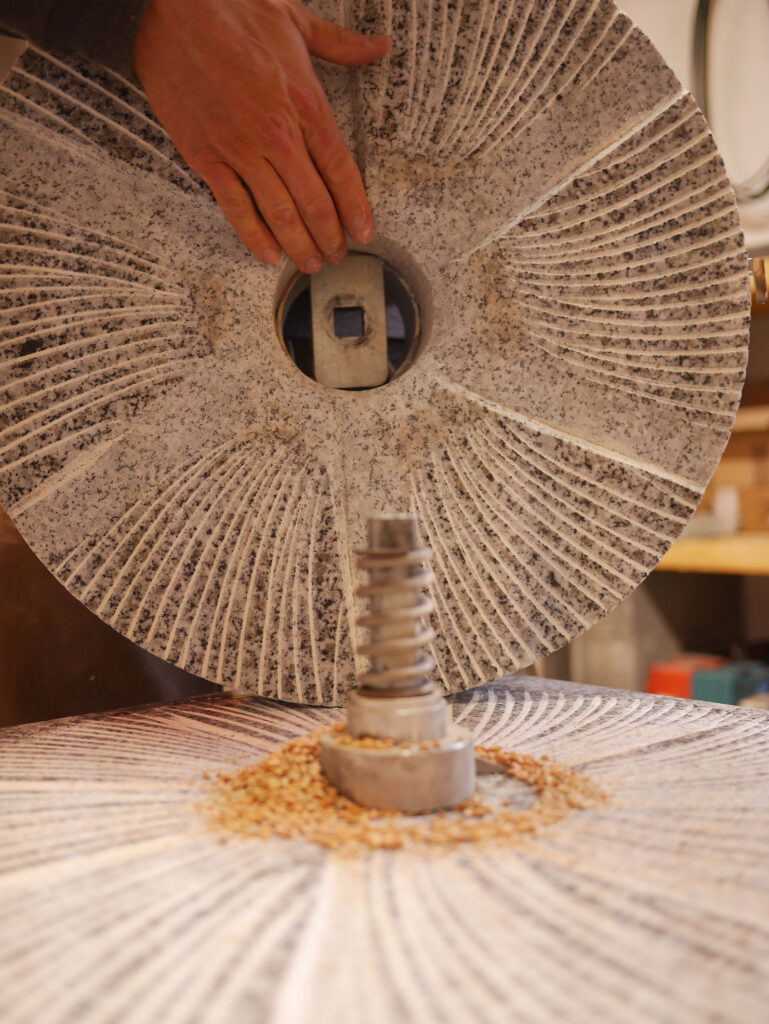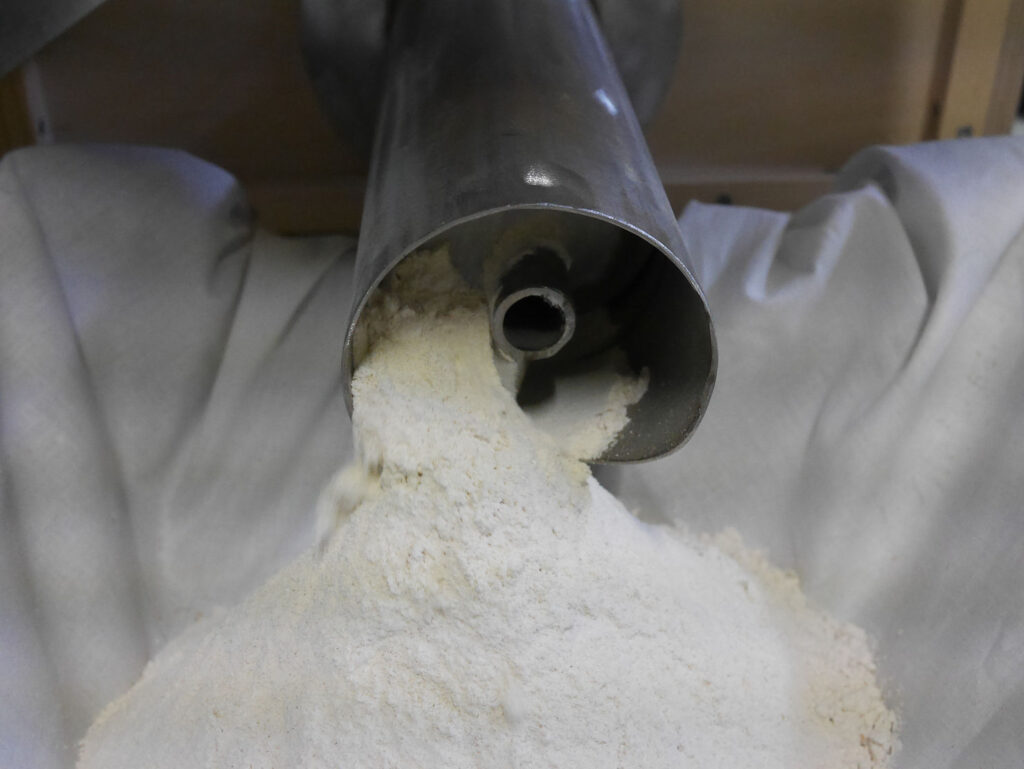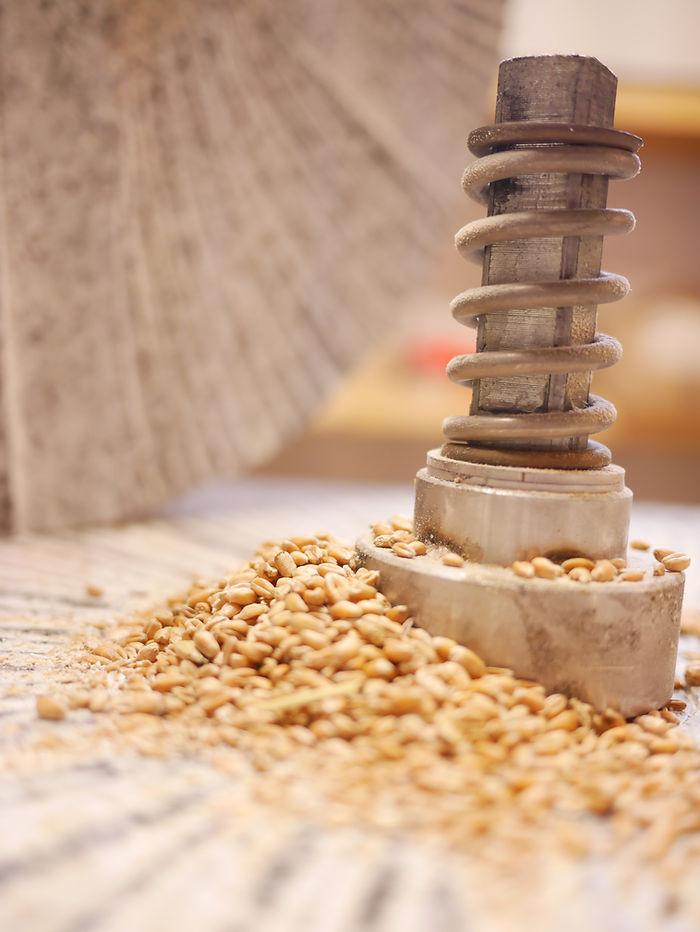This article was updated at the end of 2020. Please visit this link: ASTREIA MILL: Which size of grinding wheel and which options for a successful project?
If you need an update on the Astrié invention, read this article: “Moulin Astrié: when seeds are no longer crushed but unrolled“
The ‘little’ mill, not so little after all!
We talk about a small Astrié mill when the millstones are 50cm in diameter.
This is the mill we sell the most of because it meets the expectations of the vast majority of our customers.
However, some of our customers have seen their business grow exponentially, especially when it comes to processing or selling flour without an intermediary.
Output is around 15 kilos of flour per hour.

The ‘big’ model
A large model is when the millstones are 1 metre in diameter.
The mill’s output is doubled between the ‘small’ and ‘large’ models. Which, mathematically, was not written… But the field tests prove it.
Output is around 30 kilos of flour per hour.
Which wheel size is right for my project?
Would you like to make around 300 kilos of flour per 24 hours or 6 tonnes of flour per month?
In this case, we recommend :
- feed your mill continuously
- choose the ‘automatic extraction + bagging’ option
- choose a mill with a 50cm diameter grinding wheel
You’ll be able to produce 300 kilos of flour in 24 hours, leaving the mill running while you devote yourself to other activities. The mill automatically bags the flour and stops when the bags are full. So you change them in the evening when you leave and in the morning when you arrive. No need to intervene.
You will then make 300 kilos of flour per 24-hour day.
That’s around 1.5 tonnes per week over a 5-day week.
In total, you can make 6 tonnes of flour a month with this model and this configuration.
The choice here therefore depends on :
- your other activities
- whether or not you are available to manage the mill
- the availability and quantity of cereals you have/can store




